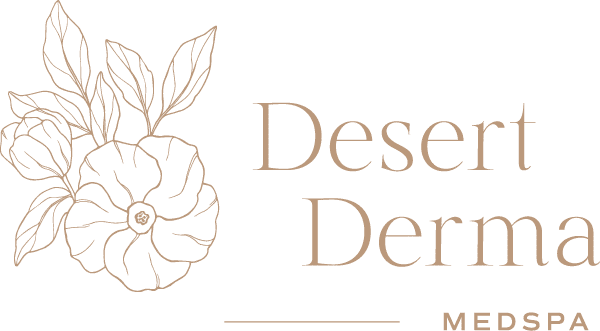Many have pursued the quest for voluminous, vibrant hair in a world that constantly strives for beauty and perfection. From age-old remedies and oils to modern treatments, the journey to restoring and rejuvenating hair has seen numerous innovations. Leading the charge in this modern era is the groundbreaking Keralase Hair Restoration treatment, an advanced solution that promises growth and a healthier scalp and thicker tresses.
Understanding Keralase Hair Restoration
Keralase Hair Restoration is a non-surgical treatment that uses the power of advanced laser technology in combination with a unique growth factor serum to stimulate hair growth. It harnesses the body’s natural regenerative capabilities to improve hair density and strength.
The procedure involves two main steps. First, the scalp is treated with a special laser, creating thousands of microchannels. This process ensures that the scalp is receptive and can effectively absorb the growth factor serum. The micro-channels, though tiny, are potent portals that bypass the skin’s natural barriers.
Following the laser treatment, the Keralase serum, enriched with growth factors and skin-boosting ingredients, is applied to the scalp. These growth factors stimulate the hair follicles, encouraging thicker and healthier hair growth.
Unlike other hair restoration methods, Keralase does not require needles, so the procedure is virtually painless. Additionally, the laser ensures the serum penetrates deeply, providing nourishment where needed. With little downtime required and a typical procedure time of around an hour, it is an efficient option for people who lead hectic lives.
In addition, the treatment suits both men and women experiencing hair thinning or loss. In particular, those with early stages of hair loss can benefit from this treatment, which hair follicles may still be active but may need a boost to grow thicker, stronger hair. Likewise, Keralase can be a great adjunct to other hair treatments, enhancing overall results.
Since no two scalps are the same, Keralase treatments can be tailored to individual needs. A professional can assess the state of one’s hair and recommend the appropriate number of sessions and intervals.
Benefits of Keralase Hair Restoration
Keralase Hair Restoration is a groundbreaking treatment for hair regrowth and scalp health. It offers several benefits that distinguish it from traditional methods and over-the-counter solutions. Here are the significant advantages:
- Non-invasive Treatment: Unlike hair transplant surgeries, Keralase is a non-surgical procedure. It means no incisions, scars, or prolonged recovery periods. Patients can typically resume their regular activities soon after the treatment.
- Suitable for Both Genders: Keralase Hair Restoration is versatile and designed to address hair thinning and loss in both men and women. It makes it a comprehensive solution for anyone seeking hair regrowth treatments.
- Improved Scalp Health: Keralase doesn’t just focus on hair growth; it also promotes a healthier scalp environment. Growing new hair on a healthy base by delivering growth elements straight to the scalp helps rejuvenate the skin.
- Visible and Consistent Results: Patients often report noticeable hair thickness and vitality improvements within a few weeks of starting their treatment sessions. The results become more pronounced with subsequent treatments, offering consistent and reliable hair regrowth.
- Minimal Side Effects: When done by trained professionals, the procedure has minimal side effects. Some patients might experience temporary redness or slight sensitivity, but these symptoms resolve quickly.
- Optimized Delivery of Growth Factors: Using micro-lasers to create channels ensures that the growth factors reach the deeper layers of the scalp, optimizing their efficacy. This delivery method is more effective than topically applied products, which may not penetrate as deeply.
- Long-lasting Effects: With proper maintenance and follow-up sessions, the results of Keralase Hair Restoration can last for a significant period, giving patients long-term relief from hair thinning and loss.
Indeed, the Keralase Hair Restoration method offers a holistic approach to regrowth. It combines advanced technology with potent growth factors, delivering a treatment that’s effective, safe, and sustainable.
Safety Considerations
When considering any medical or cosmetic procedure, safety should always be paramount. Keralase Hair Restoration, while less invasive than many other treatments, still requires certain precautions and considerations. Here’s what you should keep in mind:
- Professional Administration: Ensure that the procedure is administered by a trained and certified professional. An experienced technician understands the nuances of the treatment, which maximizes results and minimizes potential risks.
- Skin Sensitivity: Post-treatment, some individuals may experience temporary redness, itching, or mild swelling on the scalp. These are generally short-lived and can be managed with over-the-counter remedies. However, should these symptoms persist or intensify, it’s essential to contact the practitioner.
- Underlying Medical Conditions: While Keralase Hair Restoration suits many, those with certain underlying medical conditions or scalp infections should consult their healthcare provider before treatment.
- Avoid Direct Sun Exposure: Keeping the scalp out of the sun for a few days after the operation is advisable. The area that has been treated may be more vulnerable to UV radiation, increasing the risk of sunburn or hyperpigmentation.
- Follow Post-Treatment Instructions: Patients should adhere strictly to any post-treatment instructions their practitioner gives. It may include guidelines on washing, applying topical products, or refraining from certain activities.
- Pregnancy and Lactation: As with many cosmetic treatments, it’s generally advised for pregnant or nursing mothers to postpone the procedure until they’re no longer pregnant or breastfeeding.
- Allergic Reactions: The growth factors and other ingredients in the Keralase treatment should be discussed with your practitioner, especially if you have a history of allergies. A patch test may be advised to ensure there are no unfavorable reactions.
- Duration Between Sessions: It’s crucial to maintain the recommended period between sessions, as having treatments too close together can exacerbate sensitivity or negate the benefits of the treatment.
While Keralase Hair Restoration offers a promising solution to hair thinning and loss, being informed about potential risks and safety measures ensures a smooth, effective, and risk-free treatment experience. Always prioritize your safety and communicate openly with your practitioner about any concerns.
Embrace the Future of Hair Growth
Keralase Hair Restoration is a testament to the wonders of combining technology with biology. At Desert Derma MedSpa, we offer Keralase Hair Restoration that uses the Lutronic LaseMD that creates micro-channels in the scalp and then applied with the KeraFactor, which is a formula that combines bio-identical polypeptides for scalp rejuvenation. Dive into the world of Keralase and embark on a transformative journey toward richer, fuller hair!


